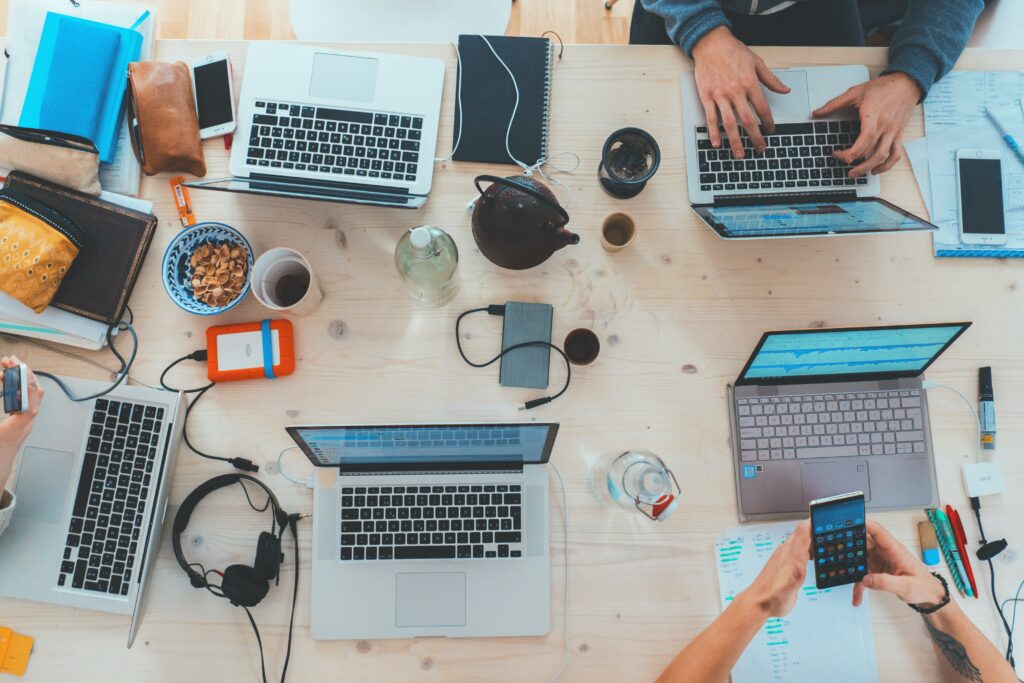Personalized Learning Networks (PLN)
What does it mean to to network using social media?
Using social media to network means that an individual is using their social platforms to make connections with other professionals. These connections can be made with or without the objective of making long-term ties with these professionals (Rajagopal et al., 2012). Types of social platforms that one might use to make these connections are Facebook, Instagram, Twitter, etc. Benefits of networking include developing and growing your own career, having consistent support, and of course providing you with the opportunity to learn new skills.
How are we motivated to participate in networked publics?
Networking through social media is something that almost every individual participates in, even if they do not realize. Gutierrez (2016) discusses the idea that relationships between individuals and technology beginning from the moment the individual is born. Online networking and social media are easily available to most individuals, making it very easy to participate in. As well, there is the aspect of peer pressure. When most of the people around you are participating in online networking, you are more likely to participate yourself.
What are the risks & rewards of public communications?
Rewards of public communication consist of developing and growing your own career, having consistent support, and having the opportunity to constantly learn new skills (Rajagopal et al., 2012). Boyd (2012) discusses the risk of public communication being the idea that once something is posted on the internet, it is not private. This can cause issues when one wants to delete or take down something they have posted, because unfortunately, it is out there forever. More specifically and a problem that is a major issue in this day and age, is the fact that people’s data is easily searched and gathered. So, although there are many rewards of public communications, there is also quite a big risk.
Digital Identity
What is a digital identity?
At the press conference at the World Economic Forum in 2019, it is discussed that digital identity is basically the identity you portray of yourself to the internet (World Economic Forum, 2019). Eric Stoller (2016) adds that that it is everything you post, share, how you are, how you engage, how you treat other people, and how you use digital tools for your own benefit and for the benefit of the people you work with. In short, it is your digital footprint.
How do personal versus professional approaches to digital identity affect social media use?
Personal approaches to digital identity consist of individuals using social media for the act of socializing with peers. They are scrolling through different platforms, posting on different platforms, engaging on others posts, etc. The benefit these individuals get is the idea that they are involved, socializing, and fitting in with others around them. Profession approaches to digital identity involve individuals using social media to obtain a job, obtain a volunteer position, or to make themselves and their skills look amazing. Eric Stoller (2016) discusses the dangers of professional approaches with social media where an individual has posted something in the past that was funny or inappropriate, and when they go to get a job in the future, that future employer can see that previous post and it can impact their job opportunity.
How do digital identities converge in networked publics – what are the impacts and/or benefits?
Public networks provide many benefits but can also have negative impacts on ourselves and society. The benefits of public networks consist of allowing individuals from all over the world to come together in one place. It is people who come from different countries, cultures, of different ethnicity’s, ages, genders, and people who have had different experiences. All of these people can come together to connect. For me, when school went online last year, it was an opportunity to really engage with people from all over the world and it was incredibly interesting. Consequences of public networks have to do with our digital footprint, security, and privacy. Like Eric Stoller (2016) stated, everything you post online stays online, it leaves a digital footprint. It also allows one’s life to become less private, and can lead to security and data breaches. Although it is important to be aware of these risks and consequences, it is still beneficial to engage and be a part of social networks.
References:
Boyd, D. (2012). Networked privacy. Surveillance & Society, 10(3/4), 348-350. http://www.surveillance-and-society.org
Rajagopal, K., Brink, D. J., Van Bruggen, J., & Sloep, P. B. (2012). Understanding personal learning networks: Their structure, content and the networking skills needed to optimally use them. First Monday, 17(1). https://doi.org/10.5210/fm.v17i1.3559
Stoller, E. [University of Derby]. (2016, November 25). What is digital identity? [Video]. YouTube. https://www.youtube.com/watch?v=u0RryRbJza0
World Economic Forum. (2019, February 5). Davos 2019 – Press conference the value of digital identity for the global economy and society [Video]. YouTube. https://www.youtube.com/watch?v=1-V7lyxrOmw

Leave a Reply